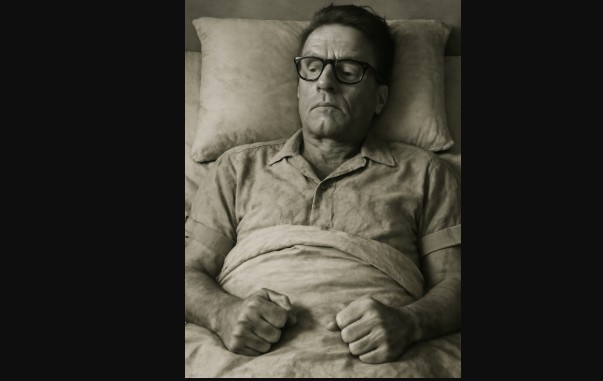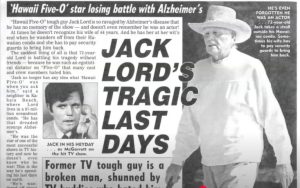I still remember the first time I saw Montgomery Clift’s last photo—there was something about it that immediately struck me.
It wasn’t just the fame or the Hollywood mystique; it was the way it captured a man, fragile yet enduring, caught between the glories and the agonies of his life.
Maybe it’s the fact that Clift lived in the spotlight and then quietly faded away from it, or that his image was forever tied to a tragic, almost mythical quality.
As I looked at that photo, I couldn’t help but wonder how someone who had experienced so much beauty and pain could have had such a quiet, unassuming final moment.
That photo of Clift, taken in the final years of his life, is a stark reminder of the delicate balance between fame and personal struggle.
His image, especially in the context of his last days, is hauntingly profound. But beyond the fame, the photo serves as a poignant symbol of his legacy. Let’s dive into the depths of Montgomery Clift’s final moments through that unforgettable image.
Montgomery Clift Last Photo

Montgomery Clift’s last known photograph was taken in April 1966 during the filming of The Defector, his final movie.
In this image, Clift appears frail and weary, reflecting the toll his health issues and personal struggles had taken on him. Despite his physical decline, his intense gaze and the vulnerability in his expression capture the depth of his character and the challenges he faced in his final years.
This photograph stands as a poignant reminder of Clift’s enduring talent and the tragic circumstances that marked the end of his life.
What Does Montgomery Clift’s Last Photo Tell Us About His Final Years?
It’s almost impossible not to think about the tortured nature of Clift’s life when you view that last photo. By the time this photograph was taken, Clift had long been battling personal demons—substance abuse, mental health struggles, and the physical toll from a tragic car accident that had forever changed his appearance and career.
That image, captured in the early 1960s, reveals a man marked by time. His face carries the weight of life’s challenges, yet his eyes still shine with a kind of quiet strength.
It’s as if, in that one photograph, you see both the fragility and the resilience of the man himself. He’s not the polished star of A Place in the Sun or From Here to Eternity—but a figure who has known pain and transformation, yet still endures.
Montgomery Clift’s Devastating Car Accident: A Turning Point in His Life and Career
On May 12, 1956, Montgomery Clift’s life was forever altered by a tragic car accident. The actor, renowned for his performances in films like A Place in the Sun and From Here to Eternity, was driving in Beverly Hills when he lost control of his car and crashed into a telephone pole. The accident left him with severe facial injuries, a broken nose, and a damaged jaw.
Clift’s injuries were so extensive that it took multiple surgeries to repair the damage, and he was left with a disfigured appearance.
This event marked a significant turning point in his career, as Clift was never quite the same after the accident. His once-carefully curated image was shattered, and he struggled with depression, substance abuse, and feelings of self-doubt.
Despite these challenges, Clift continued to work in films but was often cast in roles that reflected his own inner turmoil.
The accident not only changed Clift physically but emotionally as well, shaping his later performances and personal struggles.
While his talent never waned, the tragedy marked the beginning of a darker chapter in his life, one that he struggled with until his untimely death in 1966.
How Did Clift’s Personal Struggles Impact His Career?
Montgomery Clift was a star who was as famous for his acting as he was for his personal struggles. His sensitivity and vulnerability were what made him a beloved actor in his prime, but they were also part of what led him into deep, personal despair.
His car accident in 1956, which left him disfigured, took a heavy toll on his mental health and career. Before the accident, Clift was Hollywood’s golden boy—touted as the next big thing.
But the trauma from the crash, combined with his battle with addiction, led him into a period of self-isolation. His last years were marked by a decline in both his physical appearance and professional life.
Clift never quite recovered from the emotional and psychological scars that remained after that pivotal moment in his life.
The photo we now know as his last is a glimpse into a man who had faded from public view but was still deeply immersed in the complexity of his personal journey.
What Legacy Did Montgomery Clift Leave Behind?
Despite his tumultuous personal life, Montgomery Clift’s acting legacy remains profound. His performances in films like From Here to Eternity and The Heiress set new standards for emotional depth in acting, particularly for men in Hollywood.
His vulnerability on screen was groundbreaking at the time, breaking away from the typical tough-guy, stoic roles that dominated the industry.
Clift’s legacy is perhaps most important in how he paved the way for future actors to embrace vulnerability, allowing them to show a wider range of emotions on screen.
He wasn’t just an actor; he was a revolutionary who reshaped the portrayal of masculinity in cinema. The last photo of Clift, then, becomes a testament to this lasting impact—a final glimpse of a man who, though struggling, still embodied a unique artistic vision that left a permanent mark on the film industry.
How Did Clift’s Relationship With His Personal Life and Identity Influence His Art?
One of the most striking aspects of Montgomery Clift’s life was his struggle with his own identity, both personally and professionally.
Known for being a deeply private person, Clift often grappled with his sexuality and his place in the spotlight. It’s said that Clift never publicly acknowledged his homosexuality, but his relationships—both personal and professional—revealed a complex individual caught between his public image and private truths.
Clift’s struggles with his identity, particularly in an era that was less accepting of LGBTQ+ individuals, undoubtedly influenced his performances.
His deep sensitivity and nuanced portrayals of vulnerable characters—characters who were often battling internal struggles—feel like an extension of his own experience.
That final photo of Clift, with its mixture of weariness and inner strength, seems to whisper of these unresolved tensions, reminding us that the boundaries between Clift’s life and his art were often blurred.
What Does Clift’s Last Photo Teach Us About the Nature of Fame and Memory?
Looking at Montgomery Clift’s last photo brings up a complex conversation about fame, memory, and the stories we tell about people’s lives.
There’s an inherent sadness in the way fame can overshadow the individual, leaving a trail of public scrutiny while the real person gets lost in the whirlwind.
For Clift, much of his legacy is intertwined with his struggles—the tragic car accident, the substance abuse, and the toll of being constantly in the public eye.
Yet, that photo represents something more than just these struggles. It shows us a man, at the end of his life, who had experienced both the heights of stardom and the depths of despair.
It’s a reminder of how fragile the human experience is and how our perceptions of those in the public eye are often incomplete.
A Final Reflection on Montgomery Clift’s Enduring Legacy
In the end, Montgomery Clift’s last photo is more than just an image; it’s a symbol of his extraordinary life and the painful complexities that came with it.
As I reflect on that haunting, quiet snapshot, I’m reminded that behind the façade of fame, we all carry our struggles—whether they are visible or not.
Clift’s life was not just about his career but about his humanity. His last photo captures that humanity in all its rawness and beauty.
Perhaps the most fitting tribute we can give Montgomery Clift is to revisit his work—the films that defined him, the roles that showed us something new about vulnerability and strength.
And next time you see that photograph, take a moment to remember not just the man but the actor, the artist, and the fragile soul who left behind a lasting imprint on Hollywood.
FAQ: All You Need to Know About Montgomery Clift’s Last Photo
What is the significance of Montgomery Clift’s last photo?
Montgomery Clift’s last photo captures a man who had lived through immense personal turmoil but still maintained a quiet strength. It’s a snapshot of his final years, reflecting his internal struggles and the toll his fame and personal battles had taken on him.
How did Clift’s car accident affect his career?
Clift’s car accident in 1956 caused significant physical and emotional damage, which ultimately altered the course of his career. He struggled with addiction and depression in the years that followed, leading to fewer acting roles and a decline in his public image.
Was Montgomery Clift open about his sexuality?
Clift never publicly acknowledged his homosexuality, though many of his close friends and colleagues have since spoken about it. His personal life, including his relationships, had a profound impact on his acting, adding depth and complexity to the roles he portrayed.
What is Montgomery Clift’s lasting legacy in Hollywood?
Clift revolutionized the portrayal of masculinity in Hollywood by introducing vulnerability and emotional depth into his roles. His performances paved the way for future actors to embrace a wider range of emotions, influencing the industry for years to come.
How old was Montgomery Clift in A Place in the Sun?
Montgomery Clift was 30 years old when he starred in A Place in the Sun (1951). The film was a significant milestone in his career, showcasing his intense and emotionally complex acting style, which helped solidify him as one of Hollywood’s top leading men during the 1950s.
What caused the Montgomery Clift accident?
Montgomery Clift’s car accident on May 12, 1956, occurred when he lost control of his car and crashed into a telephone pole, causing severe facial injuries. Alcohol and substance abuse may have contributed to the crash.
Did Montgomery Clift love Elizabeth Taylor?
Montgomery Clift and Elizabeth Taylor shared a deep emotional bond, but they were never romantically involved. Their friendship was one of Hollywood’s most notable.
Were Roddy McDowall and Montgomery Clift lovers?
While Montgomery Clift and Roddy McDowall were very close friends, there is no evidence to suggest they were lovers. They shared a deep, supportive friendship.
What happened to Montgomery Clift?
Montgomery Clift struggled with addiction and health issues after his 1956 accident. He died from a heart attack on July 23, 1966, at the age of 45.
Feature Image Credit: YouTube



